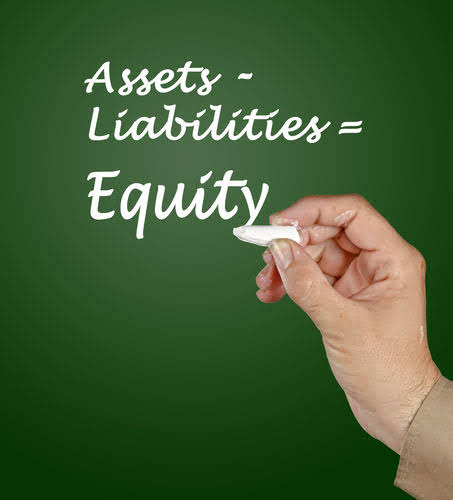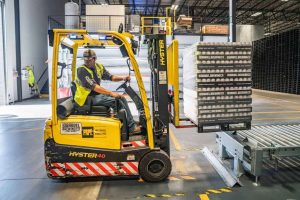
Whether you’re a successful business owner or just starting out, a cash flow analysis is essential to bolster your business. For yield-oriented investors, FCF is also important for understanding the sustainability of a company’s dividend payments, as well as the likelihood of a company raising its dividends in the future. Free cash flow is an important financial metric because it represents the actual amount of cash at a company’s disposal. A company with consistently low or negative FCF might be forced into costly rounds of fundraising in an effort to remain solvent. While a healthy FCF metric is generally seen as a positive sign by investors, it is important to understand the context behind the figure. For instance, a company might show high FCF because it is postponing important CapEx investments, in which case the high FCF could actually present an early indication of problems in the future.
Cash flow forecast formula
- Each of these valuation methods can use different cash flow metrics, so it’s important to have an intimate understanding of each.
- From an accounting standpoint, the company might be profitable, but if receivables become past due or uncollected, the company could run into financial problems.
- Get instant access to video lessons taught by experienced investment bankers.
- But we have already seen from our Macy’s example that a declining free cash flow is not always bad if the reason is from further investments in the company that poise it to reap larger rewards down the line.
The free cash flow yield is a value that indicates how much of the free cash flow generated per share by the company is contained in the current stock price. In a sort of way, cash flow yield is like the earnings yield (reciprocal of price/earnings ratio) because both compare profits to the stock price. However, the former is more reliable because only cash amounts enter into consideration. Unlike the latter, operating cash flow covers unplanned expenses, earnings, and investments that can affect your daily business activities. While a cash flow statement shows the cash inflow and outflow of a business, free cash flow is a company’s disposable income or cash at hand.
What are the Components of the Cash Flow Statement?
- It’s important to monitor free cash flow over multiple periods and compare the figures to companies within the same industry.
- Finally, subtract the required investments in operating capital, also known as the net investment in operating capital, which is derived from the balance sheet.
- When in doubt, please consult your lawyer tax, or compliance professional for counsel.
- Together with the financial ratio return on invested capital, FCF can give a complete understanding of management’s ability to make the company grow.
- Cash flows are analyzed using the cash flow statement, which is a standard financial statement that reports a company’s cash source and use over a specified period.
- Try out Fathom’s powerful cash flow analysis and forecasting features for yourself with our free 14-day trial.
Adam Hayes, Ph.D., CFA, is a financial writer with 15+ years Wall Street experience as a derivatives trader. Besides his extensive derivative trading expertise, Adam is an expert in economics and behavioral finance. Adam received his master’s in economics from The New School for Social Research and his Ph.D. from the University of Wisconsin-Madison in sociology. He is a CFA charterholder as well as holding FINRA Series 7, 55 & 63 licenses. He currently researches and teaches economic sociology and the social studies of finance at the Hebrew University in Jerusalem.

Do Companies Need to Report a Cash Flow Statement?
Cash flow is the total amount of cash that is flowing in and out of the company. Free cash flow is the available cash after subtracting capital expenditures. Positive cash flow reveals that more cash is coming into the company than going out.
Streamline your order-to-cash operations with HighRadius!
- Net present value considers the time value of money, which reflects the principle that a dollar today is worth more than a dollar in the future due to its potential earning capacity.
- Free cash flow can be spent by a company however it sees fit, such as paying dividends to its shareholders or investing in the growth of the company through acquisitions, for example.
- Ways to optimize your operations can include improving supply chain management, reducing downtime in production, and implementing lean manufacturing practices.
- In general, the higher the free cash flow is, the healthier a company is, and in a better position to pay dividends, pay down debt, and contribute to growth.
- Free cash flow is a metric that investors use to help analyze the financial health of a company.
- Free cash flow (FCF) is often defined as the net operating cash flow minus capital expenditures.
It helps you understand the quality of cash flow, its sources and whether it’s diminishing, sustainable or subject to fluctuations. Factoring in customer payment terms, supplier agreements and payments owed to your business can help with more accurate cash flow forecasting. Any non-operating gains or losses, such as those from the sale of assets, are then adjusted—subtracting gains or adding losses—since these are related to investing activities, not operating activities.

Also called a profit and loss (P&L) statement, it reflects the company’s net income at the end of the reporting period. You can compare multiple consecutive statements to identify patterns, anticipate future cash flow, and make data-driven decisions cash flow from assets calculation about business plans. The simplicity of this report makes it easy to see which activities contribute most to your business’s income and expenses. Because cash flow statements follow accounting standards, they can also be used as comparative tools.

Where Is Free Cash Flow in the Financial Statements?

- The negative signs before CapEx, purchase of marketable securities, and business acquisitions indicate cash outflows, while the positive signs for proceeds indicate cash inflows.
- The downside is that most financial models are built on an un-levered (Enterprise Value) basis so it needs some further analysis.
- It takes all cash inflows and outflows into account, regardless of the source.
- This involves adjusting for changes in accounts receivable, inventory, accounts payable and accrued expenses.
- On a surface level, more cash flowing in than out reflects a financially healthy business.
- CapEx is the fund used by a company to acquire, upgrade, or maintain physical assets such as property, buildings, or equipment.